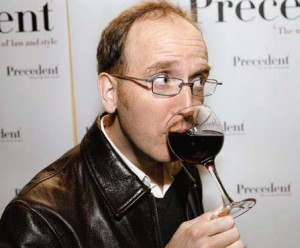 After six lovely, tipsy years as your Short Cellar, I’ve decided to dry out my spittoon and call it quits. When my editor asked me to spend my last column summing up what I’ve learned in these years, I thought to myself: It’s a good thing my column is only a few hundred words long.
After six lovely, tipsy years as your Short Cellar, I’ve decided to dry out my spittoon and call it quits. When my editor asked me to spend my last column summing up what I’ve learned in these years, I thought to myself: It’s a good thing my column is only a few hundred words long.
I feel like I know less about wine now than when I started. This isn’t just because wine is a deep and specialized field or because I am a thick and unobservant student. My feeling of ignorance arises from something more basic than a lack of academic knowledge. After years of being a wine critic, I now question the most basic assumption of the profession: I’m not sure that a wine writer can reliably tell the difference between a good and bad bottle of wine.
I thank the dismal science of economics for my growing agnosticism. Wine economists are a fascinating, if oddly sobering, crowd. Using double-blind tests, statistical analysis and the other trappings of social science, they shine a bright, unfamiliar light into the clubby, subjective and elitist world of wine criticism. In paper after paper (many published at wine-economics.org), they demonstrate that wine tasting is a dodgy business. How we perceive flavour isn’t completely arbitrary, but price, hype, labels and expectations shape the way we taste a bottle. Objectivity is a vanishing target. Even at renowned competitions, trained wine judges have great difficulty rating the same wine the same way when it’s tasted blind on different occasions.
This scientific evidence has shattered my faith. I trust my own palate, and the palate of my fellow wine critics, a lot less than I did when I started puttering around the back pages of Precedent. When a wine knocks one’s socks across the room, is it because of what’s in the glass, or the host’s enthusiasm, the bottle’s price or the company’s cheer? Fortunately for me, I can leave this question for the experts. I’m no longer a wine critic — I’m just a wine lover.
Into the Short Cellar
 Armagnac de Montal VSOP
Armagnac de Montal VSOP
$49.95, France, Vintages Essentials #618496
Long-time readers know that the Short Cellar has always harboured a great affection for cognac. However, most are expensive (when good) and fiery (when cheap). So look for the Cognac region’s little brother, Armagnac. This de Montal has a velvety texture imbued with notes of apricot, almonds and marzipan.
 Flat Rock Cellars 2006 Pinot Noir
Flat Rock Cellars 2006 Pinot Noir
$19.95, Ontario VQA, Vintages #230862
In the second issue of Precedent, I called this “the most satisfying Pinot for under $20 that I have tasted in years.” Five years later, and the 2006 vintage has evolved into an elegant but surprisingly lively old dame. The splendid 2010 vintage is currently available, and will keep just as beautifully.
A bottle to remember
 One of the most attractive things about being a wine critic is that I’ve gotten a chance to try bottles of such great rarity or age, which I’d otherwise never be able to sample (let alone afford) if left to my own devices.
One of the most attractive things about being a wine critic is that I’ve gotten a chance to try bottles of such great rarity or age, which I’d otherwise never be able to sample (let alone afford) if left to my own devices.
When I contemplate the thousands of wines I’ve sampled, the one that stands out most vividly isn’t the most expensive, the most celebrated or the most exotic. It was a simple, well-made wine from a great old vintage: Castello di Monsanto’s 1978 Chianti Classico Riserva. I sampled it at the Winetasters Society of Toronto’s annual Christmas celebration at Casa Loma in 2008.
I can still close my eyes and taste it: a haunting bouquet, astoundingly fresh fruit, and a finish that filled my mouth with the crisp, precise flavour of anise. The 2008 vintage is now in stores, but I’m saving mine for a few decades, to see if I can recreate the magic.
Matthew Sullivan is a civil litigator in Toronto.
Photo: Jeff Harris

